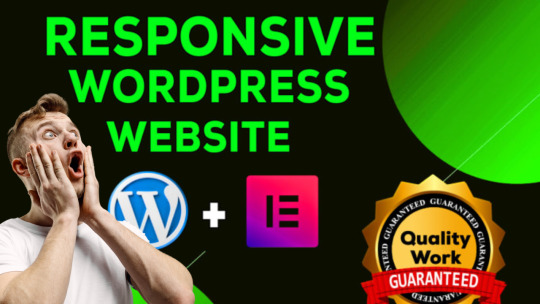#CMSChoice
Explore tagged Tumblr posts
Text
What is your pricing structure for website development projects?
Hey there! The pricing structure for website development projects can vary based on several factors. As a web development service, our pricing is influenced by the unique needs and complexity of each project. Here are key considerations:
Project Scope:
The size and complexity of the website greatly impact pricing. A simple informational site will have a different cost than a robust e-commerce platform.
Design Requirements:
Custom designs or intricate visual elements can increase costs. We work closely with clients to understand their design preferences and offer solutions that align with their vision.
Functionality and Features:
Advanced functionalities such as user accounts, databases, or third-party integrations contribute to the overall cost. We tailor the features to meet the specific requirements of each project.
Responsive Design:
Ensuring the website is optimized for various devices incurs additional effort, which is reflected in the pricing.
Content Management System (CMS):
The choice of CMS, whether it's a popular platform or a custom solution, plays a role in determining the cost.
E-commerce Complexity:
For e-commerce websites, the complexity of the shopping cart, payment gateways, and inventory management impacts pricing.
Timeline and Urgency:
Projects with tight deadlines may require additional resources, influencing the pricing structure.
Support and Maintenance:
Our pricing often includes post-launch support and maintenance, ensuring the website remains secure and up-to-date.
Experience and Expertise:
Our team's experience and expertise contribute to the quality of the service. While our rates reflect this, we aim to provide value through a seamless development process.
Transparent Communication:
We prioritize transparent communication to provide clients with a clear understanding of costs, ensuring there are no surprises along the way.

It's important for clients to discuss their specific requirements, goals, and budget with us during the initial consultation. This allows us to provide accurate and tailored pricing estimates for their unique project. Feel free to reach out if you have more questions!
#WebDevCosts#SitePricing#DevelopmentBudget#TechSolutions#DigitalInvestment#CustomWebDesign#CodeCrafting#EcommerceDevelopment#WebDesignQuotes#TransparentPricing#DigitalAgencyRates#TechInvestment#ProjectScope#ResponsiveDesign#CMSChoice
0 notes
Text
Selecting the Optimal CMS for Building a Website on a Budget
The content management system (CMS) you choose for your website build significantly impacts cost, capabilities and ease of use. Especially when working with a cheap web designer on a tight budget, your CMS choice is critical.
The top platforms like WordPress and Joomla are feature-rich but also require more web development skills which can inflate cost. A simpler CMS like Wix is very user-friendly but lacks customization.
How do you choose the right CMS for your needs and budget? Here are key factors to consider:
Development and Design Flexibility
If you want extensive customization without code, Wix, Weebly, and Squarespace offer drag-and-drop simplicity. However, flexibility is limited compared to open-source CMS options. For maximum design control on a budget, WordPress paired with a cheap web designer is ideal.
Built-in Features and Functionality
Evaluate included features like contact forms, galleries, blogs, e-commerce and member accounts. Some CMS platforms nickel and dime you for add-ons that quickly sum to big costs. Others like WordPress offer thousands of plugins to add features for free. Know what’s included.
Available Themes and Templates
Pre-made themes and templates jumpstart website creation and save costs by avoiding custom design from scratch. But too much similarity with other sites can look generic. Assess the theme catalog and customizability when working with a cheap web designer.
Ease of Use
If you have no coding expertise, choose an intuitive CMS like Squarespace where you can build a site through visual editors and widgets without touching code. While powerful, WordPress and Joomla have steeper learning curves. But an experienced cheap web designer can make them user-friendly.
Scalability
As your business grows, can your CMS easily scale with you? Open-source options like WordPress offer the most flexibility to build bigger, more complex sites over time. Make sure your platform won't limit future expansion needs or require costly migrations.
User Roles and Permissions
Managing access for multiple users like staff or guest contributors is important. Compare role options to allow granular permissions and segmentation by user type. Give access only to what each user needs to streamline workflow.
SEO Optimization
Your CMS should make it easy to optimize pages for search visibility through customizable metadata, URLs, alt text, XML sitemaps and built-in speed. Open source CMS platforms generally offer the most SEO control, which your Singapore cheap web designer can maximize.
Security Protections
Vulnerabilities like outdated software or plugins open security holes. Choose a CMS that makes it easy to leverage HTTPS, implement firewalls, manage software updates and use role-based access controls. Security upkeep should be straightforward, not an afterthought.
Affordable Pricing
Some proprietary systems require expensive monthly licensing fees that add up, as well as charges for add-ons. Others like WordPress are 100% free. Compare pricing models closely when evaluating CMS options on a budget.
Community Support Resources
For cost-effective troubleshooting, open-source CMS options offer knowledge bases, forums, and documentation created by active user communities. This allows you to tap help beyond just a cheap web designer. However, quality varies.
While not sexy, your CMSChoice has huge implications. Balance ease of use, flexibility, and security based on your budget and needs. With due diligence, you can find an option allowing you and your cheap web designer to build a quality website at an affordable cost.
0 notes